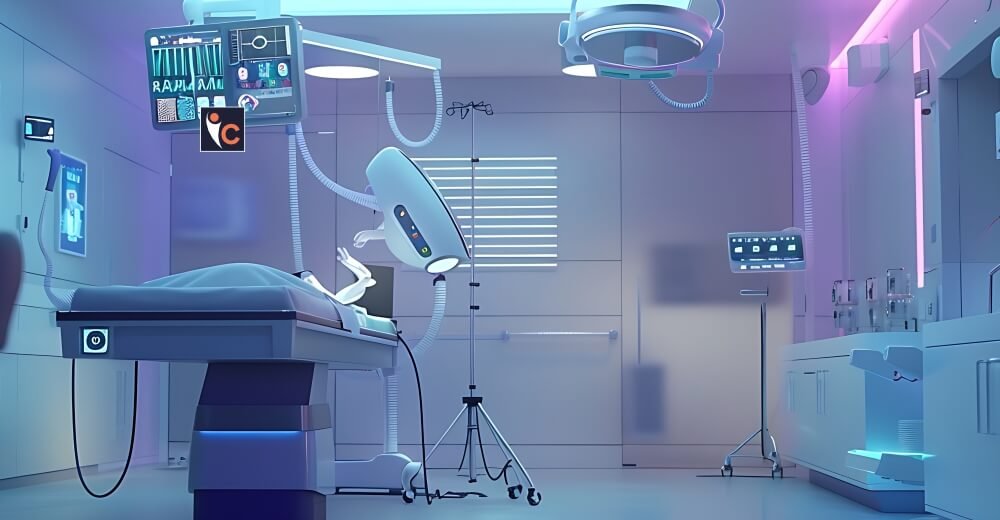Functional and Oncologic Outcomes
Over the last few years, the management of oropharyngeal cancer has received significant advancement in cure through transoral robotic surgery (TORS). This approach has received much attention among physicians and it has been shown to be useful especially in the planning of early OPSCC.
Now let’s delve into the nuances of TORS to understand how its uses effect on outcomes from tumour as well as functional viewpoints.
The TORS Advantage
TORS stands as a conferment surgical method that shifts all conventional surgical methods in the treatment of oropharygeal cancers. Through the use of sophisticated robotic equipment, surgeons are in a position to gain an approach to oropharynx through the oral cavity without necessitating any exterior cuts. This minimally invasive approach offers several key benefits:
- Enhanced Precision: It also offers the surgeon a higher magnified as well as the three dimensional image of the actual dissected area to enable better control of their movements over the tissues.
- Improved Accessibility: The use of TORS enhances the surgeon’s ability to maneuver around the oropharynx with a lot of ease because of the restricted space in oral cavity.
- Reduced Trauma: TORS also bears the advantage of not having to make incisions on the external part of the body hence has minimal cuts that can damage healthy body tissues.
Oncologic Outcomes: But as I will try to demonstrate in a closer look at two different types of task arrangements, the difference between task arrangements that are structurally integrated and those that are simply integrated is still far from trivial.
The main objectives of any cancer management are increasing the patient’s longevity and minimizing the chances of a relapse. Recent studies have shed light on the oncologic benefits of TORS:Recent studies have shed light on the oncologic benefits of TORS:
Survival Rates:
A population based study that was conducted on a number of patients which was near about 10,000 outpatients brought a ray of light. Of those who underwent TORS the five-year overall survival rate was 84%. 8%, compared to 80. average increase of 3% for treating patient who underwent conventional surgical procedures. Such a statistically significant difference may imply that TORS could give a real survival benefit.
Surgical Margins and Adjuvant Therapy:
TORS has been found to provide shorter nos surgical margins (12. 5% vs 20. 3%) than the non- robotic techniques. Further, regarding to the postoperative treatment, patients in TORS group less frequently needed adjuvant chemoradiotherapy (28. 6% vs 35. 7%). Such factors are helpful to decrease the rate of cancer relapse and increase the overall survival of patients.
Functional Outcomes: A very important aspect that needs to be preserved is known as Quality of Life or QOL.
Although the objectives of cancer treatment are on cure or prolongation of the patient’s life, the importance of the quality of this life cannot be overemphasized. TORS has demonstrated significant benefits in this regard:TORS has demonstrated significant benefits in this regard:
Speech and Swallowing:
It is worth mentioning that TORS has many benefits and one of the most important of them is the functionality of speech and swallowing after the operation. It has been established that patients who undergo this procedure were typically had less dysphagia after surgery and have better swallowing than patients receiving the standard treatment. This preservation of function is essential for nutritional health as well as to the general health of the patient.
Recovery and Hospital Stay:
Compared with conventional surgical methods, TORS patients — for the most part — have shorter lengths of hospitalization, reduced pain after surgery and a shorter time before they can go back to any activities. This fast recovery line not only enhances the patients’ satisfaction but also decreases the likelihood of the increased load in the healthcare facilities.
Complications: A Balanced Perspective
While TORS offers numerous benefits, it’s essential to acknowledge potential risks:While TORS offers numerous benefits, it’s essential to acknowledge potential risks:
1. Bleeding: As with any surgery, there is normally a potentiality for what is termed as postoperative haemorrhage.
2. Infection: As in any practical dental surgical process, there is a probability of surgical site infection albeit with a lesser occurrence than in the traditional surgical approaches.
3. Airway Obstruction: In occasional, it was observed that swelling after the surgery may cause problems in breathing.
Referring to the above complications it is important to note that the occurrence of such complications is considerably less with TORS than the conventional surgery approaches. This favorable risk profile also make the use of TORS in appropriate candidates rather desirable.
The Road Ahead: Concerns and Possibilities
As TORS continues to evolve, several key areas warrant further investigation:As TORS continues to evolve, several key areas warrant further investigation:
1. Patient Selection: Further development of the patient selection elements will be important for increasing the effectiveness of TORS without the downside of the mentioned risks.
2. Long-term Outcomes: Further follow-ups would be required in order to evaluate the effectiveness of TORS in the long-term and to evaluate for late complications.
3. Cost-effectiveness: When healthcare systems in the global society will be struggling to determine which resources to allocate, comparison of the cost-efficiency of TORS as compared to other conventional modes of treatment will be imperative.
4. Training and Expertise: One will need to address the training deficit of expertise in TORS among surgical personnel to support their broad utilization to transform patient care. Perhaps one of the most exciting fronts in cancer treatment.
Transoral robotic surgery is in effect the next step in the treatment of oropharyngeal cancer. By providing better oncologic results and functional effectiveness with better recovery profile, TORS is on the verge of becoming the gold standard in managing early-stage OPSCC.
What will be critical in the future will be prolonging the study and various trials that can help fine-tune the work, introduce the best practices, and adapt to the new problems. I believe that to fully realize the potential of this approach a joint effort of surgeons, oncologists and researchers will be needed.
When it comes to talking about an oropharyngeal cancer prognosis, TORS functions as a ray of light to patients – an opportunity for curative treatment with the least intrusiveness to the patient’s lifestyle. This means that as the field continues to grow, it will only get better and better with offering minimally invasive treatments to patients with cancer across the globe.
Read More: Click Here





